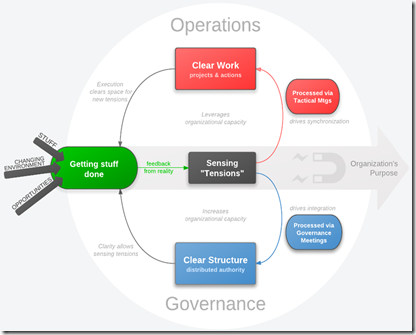One of my favorite TV shows is American Greed, which profiles grifters, schemers, and charlatans of all stripes who are able to con their prey into cashing out their 401 K’s and mortgaging the farm to get in on the ground floor of some no-fail investment scheme.
They’re not all financial related – in a recent one, a real-fake contractor got all sorts of reasonably intelligent, not especially greedy, folks in the DC metro to pay up front for major home improvements, which he’d partially complete before disappearing with the loot.
But most are schemes of the Ponzi-variety, in which ridiculously hefty returns are promised, and most of the payday goes to the scam’s originator.
It’s amazing to me that, given all the scams that have been so well publicized, and chronicled in such detail, that there are still American Dupes out there who get sucked in.
But there is a sucker born every minute, and, apparently, a con man born every hour to sucker them in.
For a variation on a theme, I was amused to read a piece by Matt Levine on Bloomberg.
Levine was keying off a Commodity Futures Trading Commission (CFTC) press release detailing an operation – which ended up with a $29 million settlement on the part of the perpetrators of the con – for bullshitting people into buying software applications that would tell them what S&P futures trades they should make.
The apps, from an outfit called CTI or Cooper Trading, were named “Boomer” and “Victory” – which should perhaps have been a tip-off the something could gang agley, but, hey, I was the product manager for econometric forecasting tool called AutoBJ, so what’s in a name?
Anyway, “Boomer” and “Victory” sold for $5K to $6K, a lot of money, but a lot less money than some of the enterprise application software I was associated with during my career and which, arguably, didn’t do the purchasers much more good than “Boomer” and “Victory” did their buyers. But we weren’t out to con anyone. The software worked. It was just way over-priced and brutally difficult to use. (A story for another day…)
Anyway, the story for today is that of Stephen Craig Symons and James David Kline, the masterminds behind “Boomer” and “Victory.”
These products were sold over the phone, from a high-pressure boiler room operation, in which “Openers” – the telesales person who made the first contact with the mark:
…were expected to make a minimum of 200 to 300 calls per day.
Two-hundred to three-hundred calls a day, huh?
This explains why the real human who picks up when I press one on the robo-call inviting me to consolidate my (non-existent) credit card balances hangs up so quickly when I start to ask questions about just what credit cards they’re talking about.
When the Opener found a live one, he passed it on to the Closer.
…salespersons [who] knowingly or recklessly falsely referred to themselves as being an "owner," "founder," "Senior Partner," or "President" of CTI.
Not surprisingly, fictitious names, with fictitious credentials, were used by sales personnel and in promotional materials. The fake names were something of a business necessity:
83. By virtue of one of CTI's Closer's use of the fictitious name "Jack Logan," Defendants concealed from CTI's Clients that for most of the time since in or around 2000, rather than working on the technology behind CTI's Systems, as he claimed to a Client, that Closer has either been in prison following his conviction for sex with a child under the age of 16, or working as a telemarketer selling, among other things, cemetery plots and sushi makers. (Source: this is from the CFTC papers that Levine quotes from.)
Forget that sordid conviction. It’s no wonder “Jack Logan” turned to finance. There are only so many cemetery plots and sushi makers you can sell on any given day. But who out there doesn’t want to make some easy money?
84. Similarly, by using the fictitious name "Mark Bishop" for Defendant Kline, Defendants knowingly or recklessly concealed from CTI's Clients that Kline never earned a degree in economics, as "Mark Bishop" (i.e., Kline) claimed to Clients, and that from in or around 1995 until in or around 2008, Kline (CTI's purported Chief Compliance Officer or Compliance Officer) held a string of non-finance related jobs, including telemarketing and sales (for, among other things, discount coupon books, sports betting advice, and real estate time shares) and provided psychic readings over the phone using the pseudonym "Ivan."
Same for “Mark Bishop”. Discount coupon books and time shares. Yawny-yawn-yawn. What sports bettor needs advice that he can’t find on his own by googling the odds and/or drawing on his inner sports genius? And psychic readings can get you into all sorts of emotional tangles.
Nope.
You want to go where the money is, and the money is where the money is.
The main point of the complaint, of course, is not so much the pseudonymity as that they lied about the actual system, with Kline telling one client that it provided "good, strong, consistent income, which I, which I like," and another that as a result of using the system "he would not have to use his retirement or savings to help support his two children who were going to college." They (allegedly, etc.) lied about how many customers used the system, and how much money those clients were making. They claimed to offer a money-back refund, and said that no customer had ever asked for a refund; in fact, many had. (Some got refunds, but "CTI ignored or denied many of those requests.")
I have to say that, by these standards, I’ve worked with at least a couple of sales guys who could end up making settlements of their own for some of the promises they made. On the other hand, they were all working under there real names. At least I think they were.
But Levine points something out that’s quite interesting:
There really was a computer system that generated trade ideas, and not via a random-number generator either:
49. Each of CTI's Trading Systems had been developed by applying various trading strategies to known historical trading data. This process is known as "back-testing," and it does not involve any actual trading.
50. By the use of back-testing during the development of CTI's Trading Systems, CTI's System developer was able, with knowledge of past market patterns and trends, to construct a profitable hypothetical past performance history when developing the Trading System.
Which, as Levine notes, is pretty much how legitimate systems of the sort work.
You study past market patterns and trends, you apply a bunch of strategies, you see what would have worked in the past, and you adapt it for the future. What else is there, you know? Do you think real quantitative trading firms are working with something other than "various trading strategies" and "known historical trading data"?
Sure, Symons and Klein were liars, and dirty rotten scoundrels, but they actually were trying to build a software package that worked. Symons, in fact, used “Boomer” on his own, and sent an annoyed e-mail to the CTI developer working on it, bitching that he was down 14% in less than a year. Symons was only doing small potatoes trading – the big bucks were in conning others into buying “Boomer” and “Victory.” Yet they really did have a software package that they’re company had developed.
They were just really, really inept at it. And they were liars, and dirty rotten scoundrels, and they got caught.
This all reminds me of an uncle of mine (not a blood uncle, mind you; this was the first husband of one of my aunts). He was pretty much a failure at anything he set his hand to. Among other things, he opened a Winnebago franchise about three-and-a-half minutes before the 1973 oil embargo. He also worked as a gold miner for a while.
At one point, he developed a software application for commodities trading, and he sold quite a few of the floppy disks containing them. I believe he also dispensed investment advice along the way. The extended family was intrigued that there were actually people out there who would take investment advice from, or use a trading application developed by, someone who didn’t have two nickels to rub together. (I just googled him up, and I do believe he’s still at it.)
I don't know, I find these scoundrels sort of charming. They decided to pivot from selling psychic readings and cemetery plots to selling stock trading computers, and they actually went and built the computer. Sure it was bad, and sure they seem to have lied about it compulsively and at massive scale, but it staggered vaguely in the direction of a real thing. As these fraud cases go, that's pretty good. No wonder they made so much money on it.
Yes, those who got conned were out the cost of the system, plus whatever they lost in bad trades. But caveat, investor.
And as scams go, these guys weren’t exactly Bernie Madoff’s.
Just a couple of seedy crooks, part of the long line of American Greedsters.



